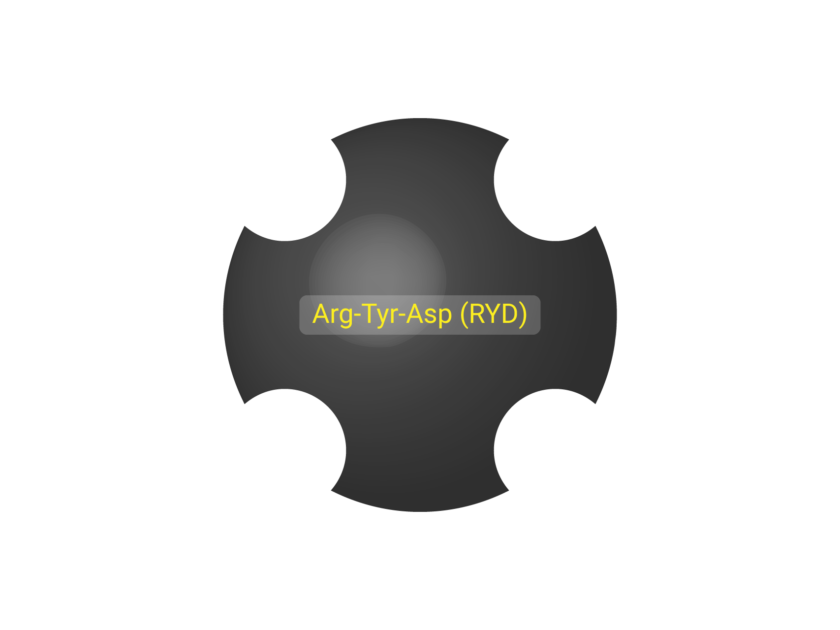Streptavidin
Avidin vs . Streptavidin
Avidin is one of several proteins capable of forming a strong bond with biotin, distinct from Streptavidin. Originally identified in egg albumin, Avidin’s sequence only differs from that of Streptavidin by about 30%. Despite this difference, the structural arrangements of Avidin and Streptavidin are nearly identical. With an impressive Kd of approximately 10-15 mol/L, Avidin’s affinity for biotin is exceptionally strong. Notably, Avidin possesses unique characteristics: it is glycosylated, carries a positive charge, and tends to aggregate. Despite these properties, its superior binding affinity makes it a more preferred choice for biotin binding than Streptavidin, especially in its unconjugated form.
Avidin Conjugates
Amplification strategies in fluorescence imaging, western blotting, flow cytometry, and microplate-based detection use conjugates.
- Fluorescent conjugates of Avidin/Neutralite Avidin/Streptavidin are used to detect biotinylated biomolecules such as primary and secondary antibodies, ligands, toxins, and DNA probes for in situ hybridization.
- Enzyme conjugates of Avidin/Neutralite Avidin/Streptavidin, such as AP and HRP, are commonly used in western blotting, ELISA, IHC, ICC, and in situ hybridization imaging applications.
- Avidin/Neutralite Avidin/Streptavidin-conjugated magnetic beads and resins have used in isolating cells, proteins and DNA, further in immunoassays or bio-panning.
Disadvantages of Streptavidin
this protein has several disadvantages or issues that limit its use in some applications:
- High Cost: Streptavidin is often expensive to produce and purchase, making it a less desirable choice for some applications compared to the Avidin derivatives.
- Immune Responses: It is an external protein and can sometimes trigger an immune response in some individuals. This could lead to potential allergic reactions.
- Non-Specific Binding: It has a strong affinity for biotin, but it can also bind to other molecules with similar chemical structures. This leads to non-specific binding and potentially false positive results. Neutralite Avidin addresses those issues with a lower pI.
- Limited Stability: Streptavidin is susceptible to denaturation and degradation. It limits its stability and efficacy in specific applications, especially under harsh conditions or high temperatures. e-proteins has conducted an R&D program to improve the stability of its derivatives at higher temperatures.
- Limited Reusability: It has limited reuse, as repeated use can result in loss of activity or reduced specificity.
- Streptavidin has a high degree of non-specific binding compared to Neutralite Avidin, which has the lowest non-specific binding.
These limitations must be considered when deciding to use Streptavidin in a particular application and many times alternate solutions may need to be considered.
Streptavidin: A Detailed Analysis
Streptavidin (CAS Number 9013-20-1) is a 60,000-dalton-mass tetrameric biotin-binding protein derived from Streptomyces avidinii. It, like Avidin, behaves as an antibiotic and has one of the best known non-covalent interactions with biotin (Kd = 10– 15 mol/L). It is substantially less soluble than Avidin because it lacks carbohydrates and has an acidic isoelectric point (pI = 5).
The streptavidin/biotin system is used for the non-covalent binding of a protein and a tiny ligand in an aqueous solution while having large free association energies. Additionally, the complexes showed superior stability over a broad pH and temperature range.
The E-coli can be used to synthesize a similar binding protein, which has a greater temperature resistance and mechanical stability for biotin binding similar to neutralite Avidin at high temperatures and comparatively low cost.

Neutralite avidin is the best replacement of streptavidin
Streptavidin Variants by Binding Sites
Monovalent
Monovalent form is an engineered recombinant version of which only one binding site remains functional out of four. There is no possibility of cross-linking at this one binding site, which has a 10-14 mol/L affinity. It has been used for various functions, such as fluorescently monitoring cell surface receptors. This serves as a pointer to designate certain areas for cryo-electron microscopy, decorating DNA origami, etc.
Divalent
Divalent form with precisely two biotin-binding sites per tetramer can be synthesized by combining subunits with and without a functional biotin-binding site and purifying with ion-exchange chromatography. It is possible to purify divalent Streptavidin that has the two biotin binding sites either close together (cis-divalent) or far away (trans-divalent) independently.
Trivalent
This form with three biotin binding sites per tetramer is a trivalent variant. The approach that is used to make Divalent Streptavidin can also be used to make trivalent variants.
Applications of Streptavidin
- Detecting or purifying different biomolecules is one of the most frequent applications of this protein.
- Several biomolecules can attach to one another or a solid substrate using the strong streptavidin-biotin affinity.
- Proteins genetically engineered with the strep-tag peptide are purified and identified using this binding protein.
- It used in immunoassays and western blotting conjugating, such as horseradish peroxidase.
- Nanobiotechnology utilizes biological materials such as lipids or proteins to construct nanoscale structures and devices.
- It has been studied in the context of pre-targeted immunotherapy. Streptavidin links to a monoclonal antibody that recognizes cancer cell-specific antigens. Radiolabeled biotin injection allows targeted radiation delivery to malignant cells when conjugated.
Two issues have negatively impacted this approach:
- The RYD sequence in Streptavidin generates non-relevant binding to other cells such as activated platelets and melanomas.
- The endogenous biotin binds this protein before the injection of the radiolabeled biotin.
As Avidin has no RYD segment, it offers better perspectives on biotechnologies applications and e-proteins have developed new derivatives to address this market.
